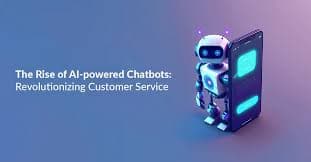AI-Powered Chatbots: Revolutionizing Customer Interaction

In the digital age, businesses are constantly seeking innovative ways to enhance customer engagement and streamline service operations. AI-powered chatbots have emerged as a game-changer in this domain, offering an intelligent, efficient, and scalable solution for customer interaction.
What are AI-Powered Chatbots?
AI-powered chatbots are sophisticated software programs that simulate human conversation using artificial intelligence. They are designed to understand and respond to user queries, perform tasks, and manage conversations in a natural, human-like manner. These chatbots leverage technologies such as machine learning, natural language processing (NLP), and sentiment analysis to provide personalized and context-aware responses.
The Advantages of AI Chatbots
The integration of AI chatbots into customer service platforms offers numerous benefits:
- 24/7 Availability: AI chatbots can operate around the clock, providing instant support to customers at any time of the day or night.
- Cost Efficiency: By automating routine inquiries, chatbots can reduce the workload on human agents, leading to significant cost savings.
- Scalability: AI chatbots can handle a large volume of interactions simultaneously, ensuring consistent service quality during peak times.
- Personalization: Machine learning algorithms enable chatbots to learn from past interactions, allowing them to deliver more personalized experiences over time.
- Data Insights: Chatbots can collect valuable data from interactions, which can be analyzed to improve products, services, and overall customer satisfaction.
Implementing AI Chatbots
To successfully implement an AI-powered chatbot, businesses should consider the following steps:
- Define Objectives: Clearly outline the goals you want to achieve with the chatbot, such as reducing response times, increasing sales, or improving customer satisfaction.
- Choose the Right Platform: Select a chatbot platform that aligns with your business needs and integrates seamlessly with your existing systems.
- Design the Conversation Flow: Create a conversation script that guides users towards their goals while providing a pleasant and efficient experience.
- Train the AI: Use a diverse dataset to train the chatbot’s AI, ensuring it can handle a wide range of queries and scenarios.
- Monitor and Optimize: Continuously monitor the chatbot’s performance and use customer feedback to make improvements.
The Future of AI Chatbots
As AI technology continues to evolve, the capabilities of chatbots will expand even further. Future chatbots are expected to become more empathetic, understanding not just the words but also the emotions behind customer queries. They will integrate more deeply with other business systems, providing end-to-end services and even predicting customer needs before they arise.
Conclusion
AI-powered chatbots represent a significant leap forward in customer service technology. By embracing these intelligent assistants, businesses can enhance customer interactions, streamline operations, and stay ahead in the competitive digital marketplace. As we move forward, AI chatbots will undoubtedly play a pivotal role in shaping the future of customer engagement.
Summary:
AI-powered chatbots represent a significant leap forward in customer service technology. By embracing these intelligent assistants, businesses can enhance customer interactions, streamline operations, and stay ahead in the competitive digital marketplace. As we move forward, AI chatbots will undoubtedly play a pivotal role in shaping the future of customer engagement.
Author:
